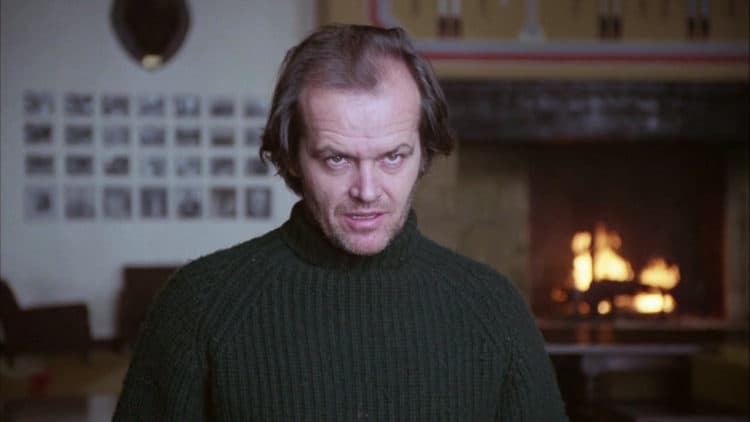
Let’s talk about movies. “Cinema,” “movies,” “films,”–whatever you want to call it. Film is an interesting medium; cinema can be viewed through virtually every aesthetic imaginable and correspond to any type of taste or viewer preference. Cinema can please viewers who prefer popcorn and snacks with their entertainment or, cinema can probe the depths of the human experience (and beyond) through both a stunning display of technical craftsmanship where all of the arts are on display in the mise-en-scene collide to create true and lasting art. I have always valued the unique power of narrative feature film as an expose of life’s most celebratory and even subversive elements. A film can be just as much as ‘high art’ like what you find on Kanopy, just as any powerful painting or complex novel, and it is through this relatively new artform within the humanities that has helped shape my worldview, and as unorthodox as it may sound, it has shaped how I relate to other people, as well as how I interpret the world and people around me. Perhaps this has to do with how cinema can mimic the real world or even provide a 360-degree mirror by which we all can find a film that we relate to in our life experiences just as easily as we can find a film of fantastical worlds and alien experiences to lift us beyond the small rock we have always called home. But like all popular entertainment, movies can sometimes be lost in a sea of dividing opinions, preferences, and interpretations that miss the point. Cinema is a mixture of all these opinions. Let’s take a closer look.
Movies and Academia
Studying cinema in academia was always one of those small details in life that made me excited about college, yet I do think it’s important to study film seriously to continue to sanctify the medium as an art form. But scholarly ramblings are not necessary for establishing the bewitching hold that cinema has over our imaginations. As previously mentioned, motion pictures are like paintings, and there is always the why and how within the reaction that warrants further analysis to try and contextualize the strange power that viewing a film has on a viewer. David Bordwell writes, “Analysis and description are rare in ordinary conversation and in film reviewing because of limits of time and space, but also because the film scholar is interested in something that isn’t so pressing for other parties: explanations.” For example, when viewing a historical film like Barry Lyndon (1975), multiple threads of analysis are readily available for exposition. A film historian or critic can contextualize how Kubrick’s stark attention to detail by shooting only with natural light, specialized lenses made by NASA by which to record candlelight, and painstaking recreations of every fiber of 18-century life is a drastic evolution of what period films during Classic Hollywood cinema employed for their historical epics with studio lighting and a lack of historical attention to detail.
Film Analysis
Films invite analysis both through the industry specifics (studios, production companies, etc.), the arts and sciences used by the cast and crew, as well as the story and the resulting social, political, or cultural themes presented. Opportunities for analysis are endless which makes studying film and the sheer prolific volumes of selections available a viable and rewarding academic journey. In my own personal film journey, I have discovered that there are usually two types of film ideologies. There are of course the escapist films that usually populate a theater near you. The high-budget, explosive action, or genre films are usually low on story and complex, thought-provoking subject matter, but are still a lot of fun. These films are for the escapist in us all. Then there are the movies that make you think; the ‘awards season” selections usually play for only a week or two and ask that a viewer really pay attention and invest in the material. But when we discuss the importance of film history, you can see that the history of the art form was not always such an exclusive and ‘taste driven’ art form; there are multiple ways to “do” film history and through methodological individualism and methodological collectivism, we can understand that there is not one history of film but many possible histories, each adopting a different perspective. I was struck at the sheer ingenuity that came into force in the early days of film. From the significant contributions of Edison and George Eastman to the essential contribution of projection from the Lumiere Brothers, a new art form was in its genesis.
Analysis and Escapism are Both Important
For example, George Méliès’ A Trip to the Moon (1902) could readily be identified with the sense of wonder and exploration that this short, silent film must have provided audiences in 1902. An immediate appreciation for the costumes, set design, and even visual effects for its time allows film scholars to contextualize that the filmmaker was highlighting the yearning for cosmic exploration and mankind’s ever-increasing want for discovery. From a contemporary standpoint, it is sometimes hard to decipher if this film is satire or parody, or just a fun piece of entertainment for a 119-year-old audience. Many of the images could easily fit into the avant-garde or experimental cinema mold of the likes of Luis Bunuel. By using film analysis, we are able to remember that linear narrative storytelling in film was still in its infancy. If we are to view the film as a story, then it is of course apparent that space travel of this kind was impossible and that human beings not only do not live on the moon but couldn’t even visit there in this form. We can also combine the history with analysis, and I think this film is conveying a satirical view on colonialism and imperialism, which were at the forefront of world politics in the early twentieth century, thereby using a historical and even cultural analysis by which to analyze the film. The convergence of historical and political filters in tandem with the history of the film itself can produce further methods for analysis. If you consider the film in its time frame (early twentieth century) then you can piece together the satire of imperialism and hubris. Even from its earliest incarnations, filmmaking was enriching and entertaining the world, and film analysis allows you to see a clearer picture of how both film history and film scholarship, in general, helps to bring these important details to light. So rather you liked “Don’t Look Up,” or “The Power of the Dog,” having an appreciation for both varieties of movies is certainly possible. silent film
 Follow Us
Follow Us





